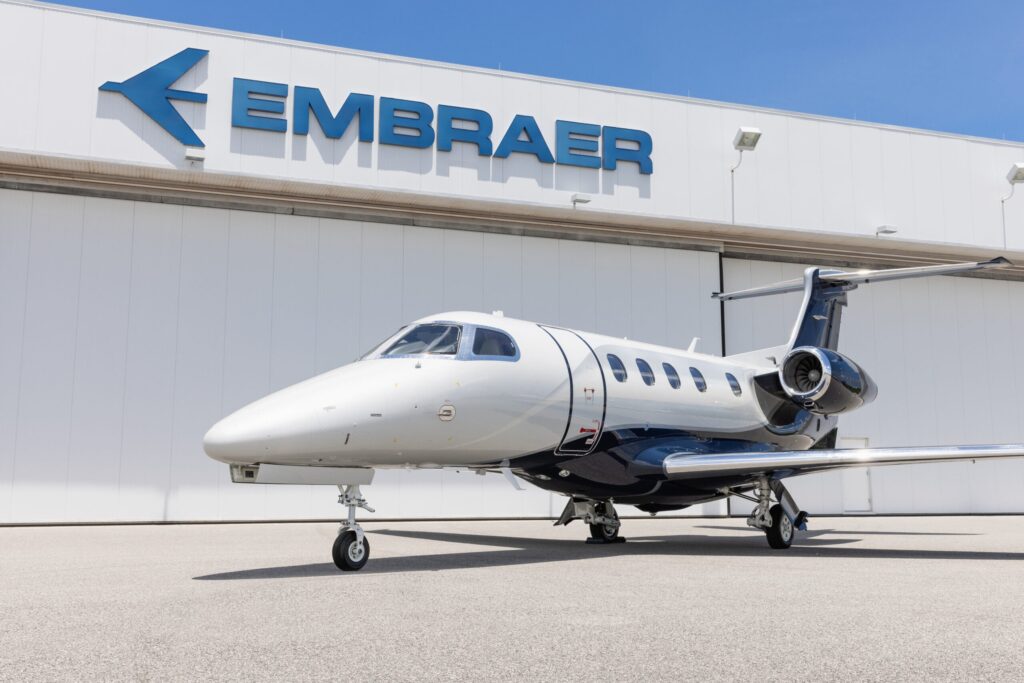Embraer, the Brazilian aerospace manufacturer, is poised to introduce an innovative Automated Takeoff System in its E2 series of jets by 2025. This revolutionary technology aims to reduce pilot workload during takeoff procedures, contributing to the increasing trend of automation in aviation. As the industry continues to evolve, this move is expected to redefine how takeoffs are performed and bring further advancements to commercial aviation.
The Concept Behind Automated Takeoff
The Automated Takeoff System (ATS) will allow the aircraft to perform the entire takeoff sequence with minimal pilot intervention. From the moment the engines are spooled up to the point of lift-off, the system will take over critical aspects of the flight, such as engine thrust management, speed control, and runway alignment. This automation is designed to complement the pilot’s role by performing routine tasks more efficiently, allowing the crew to focus on higher-level decision-making and situational awareness.
ATS will work in harmony with the aircraft’s existing flight management system (FMS), utilizing advanced sensors, flight data, and aircraft performance algorithms to ensure smooth and safe takeoff procedures. By automating these critical tasks, Embraer hopes to improve takeoff accuracy, reduce human error, and enhance overall flight safety.
Reducing Pilot Workload
Automation in aviation has been a growing trend over the past few decades, with systems like autopilot, auto-thrust, and auto-land already in use on many commercial aircraft. Embraer’s introduction of ATS is the next step in this progression, providing another level of assistance to pilots during one of the most critical phases of flight — takeoff.
The implementation of ATS is expected to significantly reduce the mental and physical workload on pilots, especially during high-stress situations such as congested airports or adverse weather conditions. This system will perform tasks such as thrust management and maintaining the correct speed during the initial climb-out, allowing the crew to devote their attention to monitoring the flight environment and communicating with air traffic control.
Safety and Efficiency Benefits
In addition to reducing pilot workload, the automated system is designed to improve the safety and efficiency of takeoff procedures. One of the main benefits of ATS is its ability to optimize the takeoff profile, ensuring the correct speed is maintained throughout the phase of flight. By using algorithms and data from the aircraft’s performance databases, the system can calculate the most efficient takeoff trajectory based on the weight of the aircraft, runway conditions, and weather.
This level of precision can reduce fuel consumption and emissions, contributing to more sustainable flying. Furthermore, ATS can help prevent errors such as over-rotation or incorrect speeds, which can occur when pilots are overwhelmed or distracted during takeoff.
Challenges and Concerns
Despite the promising potential of an automated takeoff system, there are concerns about its impact on the aviation industry. One key issue is the human element in aviation. While automation is designed to assist pilots, there are questions about whether fully automating a critical phase like takeoff might erode pilot skills or reduce their ability to handle emergency situations.
Furthermore, as automation technology becomes more integrated into flight operations, the need for extensive training and certification for pilots and maintenance crews will grow. Pilots will need to familiarize themselves with new systems, and aviation authorities will need to establish regulations to ensure that automated systems operate safely in all environments.
Another concern is how this technology will be received by passengers, who may feel uneasy about the idea of a fully automated takeoff. However, as with previous technological advancements, such as autopilot systems, widespread acceptance is expected to grow over time as the technology proves its reliability and safety.
Aviation Shift Toward Automation
The introduction of Embraer Automated Takeoff System is part of a broader trend in the aviation industry toward increasing automation. Technologies such as autonomous aircraft and advanced cockpit systems are being developed to enhance safety, efficiency, and reliability. ATS represents just one facet of the future of aviation, where human pilots work alongside intelligent systems to ensure the highest levels of safety and operational excellence.
As Embraer works towards the 2025 launch, the aviation industry is keenly watching the development of automated systems in commercial aircraft. The success of the Automated Takeoff System could serve as a blueprint for other manufacturers, leading to widespread adoption across the industry in the coming decades.
Embraer announcement to implement an Automated Takeoff System by 2025 marks a significant milestone in the evolution of aviation technology. The ATS promises to reduce pilot workload, improve safety, and boost operational efficiency, all while aligning with the growing trend of automation in aviation. Although challenges and concerns remain, the introduction of this system is a testament to the ongoing push for smarter, safer, and more efficient flying. As the industry moves toward this new era, Embraer’s innovation could very well shape the future of air travel.




